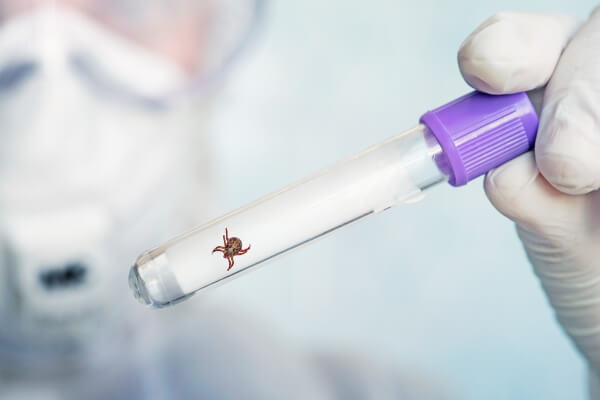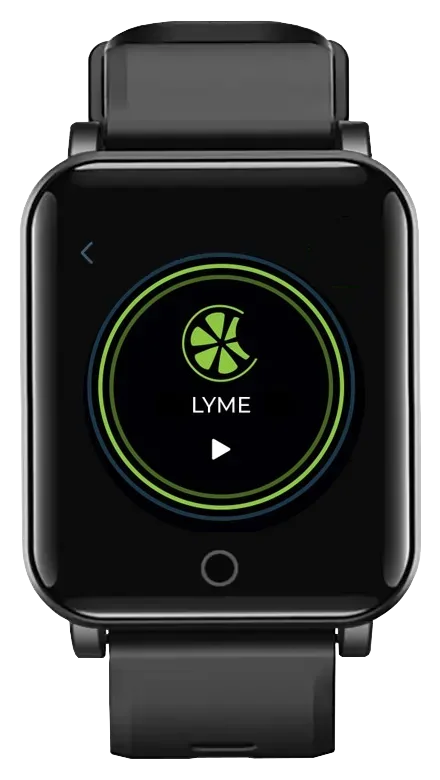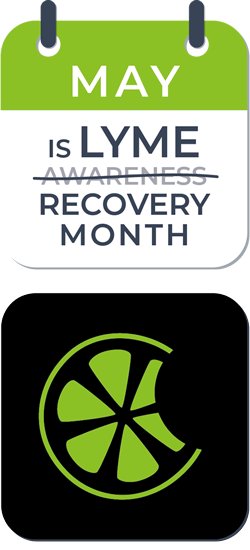Most people will experience low back pain (LBP) at some point in life, more often than not caused by mechanical factors. Rarely do they associate low back pain with viruses or bacteria – the exception being when it appears shortly after a cold or flu.
This blog post looks into the less common yet dangerous cause of LBP: Lyme disease. The article will give you a deeper overview of the early stage of Lyme disease and its persistent symptoms.

What is Lyme Disease?
The History of Lyme Disease
Lyme disease takes its name from Lyme, Connecticut, where the full spectrum of illness was first discovered. In 1975, an unusually high number of children and adults who lived in the town of Lyme, Connecticut began to experience symptoms of skin rashes, chronic fatigue, paralysis, and other debilitating health issues. Since Lyme hadn’t been discovered yet, they were misdiagnosed with rheumatoid arthritis. But upon further laboratory-based investigation and study, it was observed that the affected people lived near wooded areas, and their symptoms would worsen in summer – the peak season for ticks.
Among the unique findings for LD was a peculiar rash on the skin, which preceded any arthritic-like symptoms. Many recalled being bitten by a tick near the rash.
Further investigation revealed that deer ticks infected with the spiral-shaped bacterium Borrelia burgdorferi – not wood or dog ticks – were responsible for this Lyme arthritis.
The Bacterial Cause of Lyme Disease
It was found that the Borrelia burgdorferi bacterium usually feeds and breeds on deer. The expansion of suburban developments in rural regions and a larger deer population has resulted in more people being infected by this bacterium. Specific areas where Lyme disease is often found include the coastal Northeast, Costal, Northwest, mid-Atlantic states, Wisconsin, Minnesota, Northern California, and large swaths of Asia and Europe – with recent sightings in South America.
Common Symptoms of Lyme Disease
Lyme disease can have varying effects on different parts of the body, from the heart and brain to the nervous system and other organs. The bacterium enters the bodies of victims after tick bites occur. Then, days to weeks later, as it spreads beneath the skin, an expanding red rash and flu-like symptoms may occur. In more severe cases, joints, heart, and nervous system abnormalities are possible.
Symptoms of Lyme disease include:
- Flu-like symptoms, such as fatigue, fever, and muscle or joint aches
- A red expanding rash at the site of the tick bite
- Joint pain in multiple joints (polyarthritis) or chronic pain
- Bell’s palsy or facial paralysis
- Neurological disturbances such as sleep disturbances, confusion, and concentration problems
Three Phases of Lyme Disease
Lyme disease can be broken down into three major stages:
1) Early-stage Lyme disease involves localized skin inflammation.
2) The spread of early Lyme disease can cause arrhythmias in the heart and involve the nervous system, such as Bell’s palsy and meningitis.
3) Late stages of chronic Lyme disease have been known to include damage to motor and sensory nerves, as well as brain inflammation and arthritis.
After a tick bite, individuals may develop a rash in several days to weeks. This rash may be itchy or not and can often accompany fatigue, muscle and joint stiffness, painful and swollen lymph nodes, and headache, as well as fever in certain cases.
Typically, the rash will heal on its own within about one month. In the following weeks or months after the bite, however, bacteria can spread through the body and can result in further complications, including affected joints (particularly the knees), heart problems, and issues with the nervous system.
A rash has been reported in about 60 to 80 percent of Lyme cases.
Treating Lyme Disease
Lyme disease is often treated with antibiotics. Treatment has typically shown to be successful; however, some individuals may experience complications after the treatment.
While medications can be effective in treating Lyme disease, there are lifestyle changes you can make to reduce your chances of infection as well as manage symptoms:
1) Wear light-colored clothing while outdoors so that ticks are easier to see and remove.
2) Avoid wooded areas and use repellents containing DEET or permethrin when possible.
3) Check yourself or your pets for ticks after being outdoors.
4) Keep lawns mowed and grass trimmed short to discourage tick habitats.
Alternative Way of Managing Lyme Disease
In addition to antibiotic treatment, there are alternative methods for managing Lyme disease, such as the WAVE 1.This non-invasive device uses low levels of non-audible sound waves in the form of frequencies to reduce inflammation and speed up healing.
The Lyme Support Program technology delivered on the WAVE 1 supports the recovery of a properly functioning immune system. In turn, this encourages cellular repair and regeneration to help overcome the devastation of Lyme and Co-infections. Many users report a reduction in pain and inflammation associated with Lyme disease and also increased range of gentle motion and exercise.

What is Back Pain?
As a secondary symptom of Lyme disease, back pain usually begins with either a tingling or burning sensation in the lower back. Additionally, one may experience stabbing pains through their legs, buttocks, and feet.
This type of pain has been compared to a migraine-like headache, with throbbing-type sensations increasing during movement or activity. Muscle tightness along the spine and soreness or weakness in muscles within one’s back is also fairly common.
Types of Back Pain
Medical professionals often categorize back pain in various ways. Patients are asked to specify the location of their back pain, such as upper, middle, or lower back on the left, center, or right side.
Additionally, one’s healthcare provider will ask about the type and intensity of the pain: is it mild, moderate, or severe? Does it manifest as a dull ache or a more focused and sharp twinge?
Finally, one’s back pain may be qualified by its duration – is it acute (sudden and brief), or has it been persistent/chronic (lasting longer than 3-6 months)?

16 Lifestyle Tips to Reduce Back Pain from Lyme Disease:
Fortunately, there are plenty of lifestyle changes you can employ in order to lower the amount of back pain you may be experiencing due to Lyme disease.
- Maintain good posture while sitting or standing – proper alignment can ease the stress on your joints and spine.
- Perform regular, gentle exercises – this can help to strengthen your back muscles and reduce tension.
- Utilize cold or hot packs – depending on the severity of the pain, cold or hot packs can help provide temporary relief.
- Take NSAIDs as suggested by your Doctor/Practitioner – medications like ibuprofen, naproxen sodium, acetaminophen, etc., may help with inflammation and pain reduction when used as directed.
- Employ physical therapy – a trained professional can provide exercises specifically for you that focus on strength and posture training to ease muscle tension and improve the range of motion in your spine.
- Use relaxation techniques such as yoga or meditation to reduce the stress associated with Lyme disease symptoms, which can exacerbate existing back pain levels.
- Seek medical care – consulting with your doctor or a physical therapist may be necessary for more severe cases of back pain to help evaluate the source of the pain and explore other treatment options.
- Consider acupuncture – this traditional Chinese therapy uses hair-thin needles inserted into specific points on the body to stimulate energy flow, relieving tension and ultimately reducing pain levels.
- Participate in activities that you enjoy– engaging in regular physical recreation can help strengthen muscles while taking your mind off of any existing discomfort.
- Get adequate rest – proper sleep helps your body heal itself, making it essential for managing Lyme disease symptoms like back pain. A consistent sleep schedule can help lessen fatigue throughout the day, alleviating pain levels.
- Massage therapy – massage therapy can help reduce tension and improve circulation, decreasing discomfort in your back. Working with a massage therapist with experience treating Lyme disease patients is important for optimal results.
- Try herbal remedies as prescribed by your Doctor/Practitioner – some herbs have anti-inflammatory properties that may help to reduce joint and muscle stiffness associated with Lyme Disease back pain symptoms. Consult your doctor or an experienced herbalist before taking any natural supplements to ensure safety and effectiveness.
- Heat application – using a heating pad, hot water bottle, or electric blanket can temporarily relax the muscles around the spine while also increasing blood flow, which helps speed up healing time.
- Manage stress – finding ways to cope with any stressors or anxieties can help reduce muscle tension and pain in your back.
- Wear supportive shoes and braces – supportive, cushioning shoes or a brace can provide extra stability for your lower back while walking or standing up, reducing discomfort.
- Making healthy lifestyle choices – eating a balanced diet, undergoing regular exercise, reducing caffeine intake, staying hydrated, avoiding smoking, and limiting alcohol consumption all play an essential role in managing Lyme disease symptoms like back pain.

When to See a Doctor
If your back pain persists or worsens despite self-treatment, it’s best to consult a doctor. They can help you identify any conditions that may be causing your discomfort and develop a personalized plan of care tailored to your particular situation.
While the tips in this article may help relieve pain caused by Lyme disease in the back and improve your overall wellness, they cannot substitute for a qualified physician’s medical advice. If you suffer from persistent discomfort in your back, you must consult a healthcare professional for further direction to have your Lyme disease treated.
Other Causes of Back Pain
Herniated or Slipped Discs
When your physician brings up herniated or slipped discs, this means the soft tissue between your joints has been displaced. Often this is a result of wear and tear. The pressure on your lower back or hip nerves can cause discomfort because of the herniated discs.
Bulging Discs
A bulging disc is slightly different than a herniated one, as it does not protrude as much. Most of the time, you will not experience any symptoms, although you may feel discomfort if it presses on a nerve root.
Degenerative Disc Disease
As we age, the discs or “shock absorbers” between our spine’s vertebrae may become worn down, causing the bones to rub together. This is known as disc degeneration.
Sacroiliac Joint Dysfunction
The sacroiliac joint is located where your spine and pelvis meet. It is essential in transferring the upper body’s weight to the lower body but doesn’t move very much. Swelling and deterioration of the cartilage around this joint can be caused by injury, arthritis, infection, or pregnancy.
Spine or Vertebral Fractures
A spinal fracture can be caused by an impact on the back, a fall, or as a symptom of osteoporosis – a condition that weakens bones.
Sprains and Strains
Injuries to the ligaments, muscles, and tendons that support the spine and its joints can cause back pain. This often occurs when someone is lifting an object and twisting simultaneously, or it may occur following a car accident or a sports injury.
Conclusion
Living with Lyme disease can be difficult, especially when it comes to back pain. Fortunately, there are many ways to reduce discomfort and improve your quality of life. From massage therapy and herbal remedies to wearing supportive shoes and braces, managing stress levels, or making healthy lifestyle choices, these 16 tips should help you find relief from the symptoms of Lyme disease-related back pain.
And if you want a science-based, doctor-approved home based and on-the-go wearable that can accelerate your immediate wellness plan and long-term health, the FREmedica WAVE 1 Lyme Support Program is an excellent support tool on your path to overcome and finally feel better. Contact us today to find out how you can take your life back from Lyme disease!




